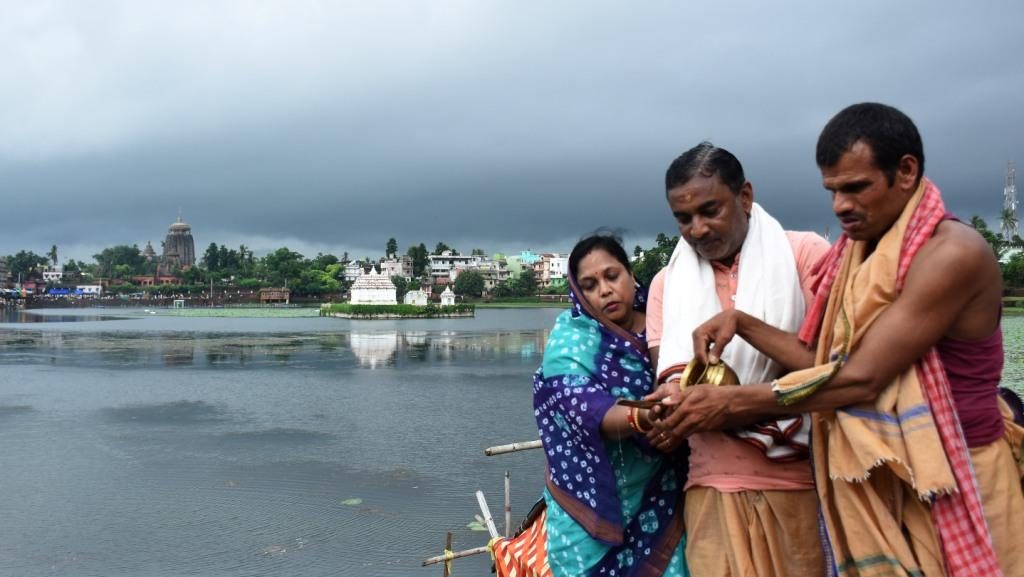The start of ‘Mahalaya’ begins with a tour to the picturesque lanes of the potters, where the Goddess is given her eyes, in what is called as ‘Chokkhudaan’. ‘Chokkhudaan’ takes place at the break of dawn on ‘Mahalaya’, where the potters paint the eyes of Goddess Durga
Bhubaneswar: The city of temples witnessed scores of people perform ‘tarpan’ to the departed souls of their ancestors and offer ‘bhog’ to the sages.
As per tradition, celebrations for Durga Puja begin with ‘Mahalaya’. It is the day when Goddess Durga descends on earth. Goddess Durga has begun her descent after having vanquished the evil demon Mahishasura and to remind us of this victory, we have the auspicious day of ‘Mahalaya’.
Another ritual that goes to mark the short life of humans on earth— ‘tarpan’ is also observed on this day.
It may be mentioned here that ‘tarpan’ comes from the word ‘trup’ which means satisfying or pleasing others.
‘Pitru tarpan’ is a way of gratifying the ancestors and freeing them from any unfulfilled desires so that they can complete their journey to the heavenly abode with peace, satisfaction and happiness.
The objective of performing ‘tarpan’ is that God and deceased ancestors’ souls— whose names are pronounced while performing ‘tarpan’, would bestow happiness on us.
In the wee hours of Saturday morning, denizens flocked to the ghats of Bindu Sagar and several other such holy water bodies at various temples where men clad in dhoti and chadara offered ‘tarpan’ for the ‘Pitru paksha’ puja. Rasi, kusha, water, Ganga murtika, flower and sandalwood paste were some of the materials used in the puja.
‘Tarpan’ should be performed at the riverside. While performing ‘Pitru tarpan’ at the riverside, one should stand in the river so that the water level touches the belly button or one should perform ‘tarpan’ by sitting on the banks of the river.
‘Tarpan’ for God and sages should be performed by facing east and that for deceased ancestors’ souls it should be performed by facing south.
It is performed by remembering the ancestors with their names. Then, with the chanting of mantras, one offers water, milk and black sesame seeds. Sesame seeds particularly constitute the food of the ‘pitrus’. Then either cooked rice or any special food the ancestors were fond of is offered with a wish that this offering will satisfy their desires and help them to progress in their journey.
Offering of water to deities should be done using the fingertips, while offering of water to sages should be done from the base of the little finger and the third finger and that to the deceased ancestors’ souls should be done through the mid of the thumb and the first finger of the hand.
Orissa POST interacted with Lokanath Singhari, a senior Srimandir servitor, who explained the day and the associated rituals in details.
“It’s the occasion to offer pinda to pitru purush and today is Amavasya. In Shiva Purana it has been described that while offering pindas, demons used to obstruct the process. So, to make it a hassle-free affair, Goddess Durga was invoked by the sages.”
At Cuttack, the ‘Bengali Samaj’ organised a radio programme with ‘Chandi path’ and ‘Mahisasur mardini’. Special ‘Sodasha puja’ was also organised at several ‘Shakti pithas’ across the state.
